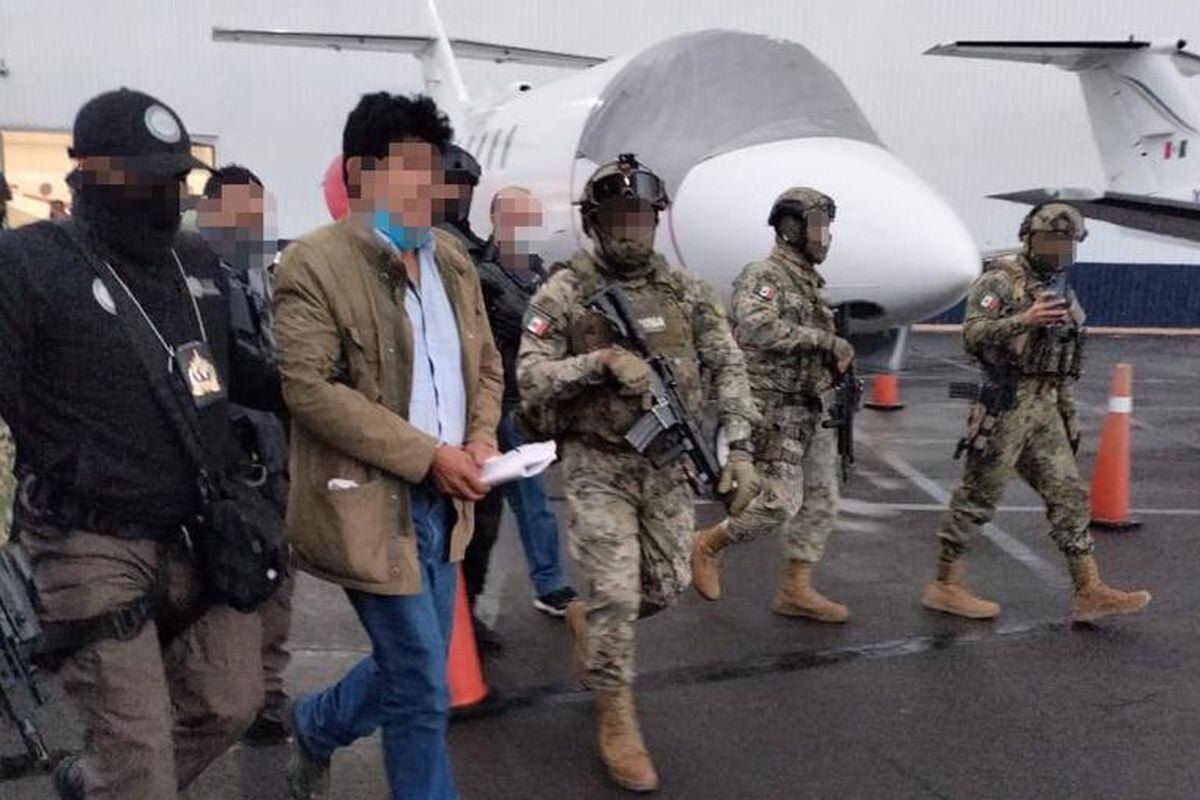The United States is already waiting for Rafael Caro Quintero, the drug lord arrested this Friday in Mexico. The attorney general, Merrick Garland, has assured this afternoon that his country is ready to bring to justice the old kingpin of the Guadalajara cartel, who had been living on the run since he was released from prison in August 2013 for a judicial error. Among the crimes that he will face are the “torture and execution of the DEA special agent [la agencia antinarcóticos de EE UU] Enrique Kiki Camarena”, perpetrated in 1985. “There is no hiding place for anyone who kidnaps, tortures and murders US agents,” says a statement issued by the Department of Justice this afternoon, just three days after the visit of Mexican President Andrés Manuel López Obrador to Washington.
This will be Caro Quintero’s first encounter with American justice. The capo, who supposedly turns 70 next October (he has six dates of birth in his judicial profiles), was captured in 1985 after the murder of the DEA agent and despite the fact that he fled to Costa Rica to hide. He was then also charged with the murder of John Clay Walker and Alberto Radelat, two US citizens who members of the cartel mistook for agents of the anti-drug agency. He was sentenced to 40 years in prison, but was released 12 years before serving his sentence, unleashing the wrath of the United States, where he is considered the “arch nemesis” of the DEA.
In 2018, Caro Quintero was added to the FBI’s most wanted list. He was the 518th addition to the famous list of the most public criminals on the planet. It was the first time a DEA fugitive had reached the Decalogue. To underscore his interest in the character, authorities put a $20 million price tag on his head.
Known as El Príncipe and El Narco de Narcos, the capo lived almost nine years hidden in areas of the states of Sonora and Sinaloa, regions in which he forged his legend in drug trafficking. He regained his freedom in 2013. Washington has since redoubled the judicial offensive against him. Caro Quintero has several open processes against him. In California, since July 1992, the judicial case for the murder of Camarena. In addition, he faces crimes for kidnapping a federal agent and for violent crimes linked to a mafia organization. On the other side of the country, in New York, he has been facing charges since 2018 for his role as leader of an organization that has trafficked methamphetamine, heroin, cocaine and marijuana into the country since 1980.
In April of last year, a federal court in Brooklyn, New York, managed to confiscate five properties that Caro Quintero allegedly bought with illicit money and that he put in the name of his relatives. These were in Guadalajara and Zapopan, in Jalisco, the region where a large criminal alliance was born in the late 1970s that, years later, would give rise to the modern Sinaloa, Tijuana and Juárez cartels.
“These seizures exemplify our determination and perseverance to bring Caro Quintero to justice for her crimes,” DEA Special Agent Ray Donovan said at the time. “The number one priority of the DEA is Rafael Caro Quintero, he killed one of our agents… for us it is something personal,” Donovan declared in an interview with this newspaper in 2019, the year in which the process began to confiscate the properties of the capo family.
Two years ago, Washington requested the extradition of Ismael Quintero Arellanes, the capo’s nephew and who was considered his right-hand man within the organization. Ismael was captured in January 2020 in Culiacán, the capital of Sinaloa. In New York he is awaiting trial for drug trafficking, but sending him north was stopped by a Mexican judge.
The future that awaits Caro Quintero in the United States will be similar to that of his younger brother, Miguel Ángel. This was one of the most wanted men in the United States since 1990, when a Colorado court ordered his capture. This came eleven years later, again having the state of Sinaloa as the setting. His extradition took eight years. In 2010, Miguel Ángel Caro Quintero pleaded guilty to having helped traffic 100 tons of marijuana in just three years, from 1985 to 1988. In the opposite direction, from north to south, 100 million dollars were sent for the drug, which today It is legal in 19 states of the country. He was sentenced to 17 years in prison. Everything seems to indicate that the hand he soon receives from The Boss of Bosses will be tougher.

